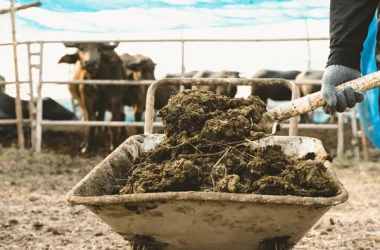Timis County stands out as a vital centre of Romanian agriculture, being the first in terms of agricultural area, 693,034 hectares, and the second in terms of the area of land cultivated organically. In addition, the western Romanian county is attracting significant and growing interest from investors, accounting for 5% of all agricultural land transactions nationwide in 2023.
These are some of the conclusions of an analysis made by CBRE Romania, a leading provider of commercial real estate services, on the business and alternative investment and development potential of Timis County.
“Timis County, with significant agricultural potential in terms of favorable climatic conditions and fertile soils, attracts the interest of investors due to the development opportunities of the area. In 2023, agricultural land transactions in Timis County accounted for 5% of the total per country. Moreover, in the first two months of this year about 850 transactions were concluded, marking an increase of 31% compared to the same period of the previous year”, says Mădălin Aresmerițoaie, Senior Consultant Industrial & Logistic Services, CBRE Romania.
Timis County stands out for its diverse development opportunities, ranking first at national level in terms of arable land, with a figure of 530,808 hectares. This vast arable area is a solid pillar for the growth and diversification of agricultural activities in the region.
Unlike other regions of the country which face dry periods with insufficient rainfall to grow profitable crops, Timis County enjoys rich rainfall. In addition, the system of drainage canals contributes significantly to the efficient management of surplus water, ensuring optimal conditions for high agricultural yields.
“There are about 9000 km of drainage canals serving almost 380,000 hectares, used as a buffer for irrigation water. Despite this, there is a high demand for the water resource needed for irrigation in dry seasons. Every year, farmers have to adapt to changing climatic conditions. However, hail remains an extremely prevalent weather phenomenon in recent years in the Timis area, even in terms of compensation. For example, in July 2023, heavy rains and heavy hail caused damage estimated at 15 million lei, affecting 25,000 hectares of land cultivated with rapeseed, wheat and sunflowers,” says Horia Lupu, Managing Director of Agra Asigurări.
Farmers in Timis are embracing new trends and adopting regenerative farming practices
Farmers in Timis County are increasingly adopting sustainable farming practices, abandoning the use of chemical fertilisers and synthetic pesticides. This transition not only promotes environmental protection, but also encourages healthier and more natural agricultural products for consumers.
“In Timis county, almost 60,000 hectares are cultivated organically, ranking second in the top counties that practice this type of agriculture. By organic farming, we mean practices that do not use chemicals or genetically modified organisms, but rather specific cultivation technologies, and it is the only type of agriculture regulated by standard requirements. Farmers are turning to it as a result of increasing demands for certified organic products. Moreover, the support offered by the Ministry of Agriculture for those who practice this type of agriculture is greater than that for traditional agriculture,” says Ion Toncea, President of the Association for Sustainable Agriculture in Romania and Head of the INCDA Fundulea Organic Farming Laboratory.
With the practice of conservation agriculture, organic carbon stock, biological activity, above and below ground biodiversity and soil structure are improved. Soil degradation is greatly reduced, leading to increased productivity.
“In the long term, more and more farmers will switch to conservation farming because it will reduce on-farm expenses, machinery or personnel costs. Work is reduced almost to a minimum. In addition, we can have a crop that uses less water because with these farming practices, evaporation is reduced by the plant residues that form the topsoil. Timis soils are known for their high fertility, and conservation farming is well suited to these nutrient-rich soils because it maintains and improves their fertility in the long term, without excessive dependence on external inputs such as chemical fertilisers,” says Petre Danilă, a farmer from Timis county who decided two years ago, for economic and climatic reasons, to make the transition to conservation farming across his entire cultivated agricultural area of about 300 ha.
The detailed study can be found here.








